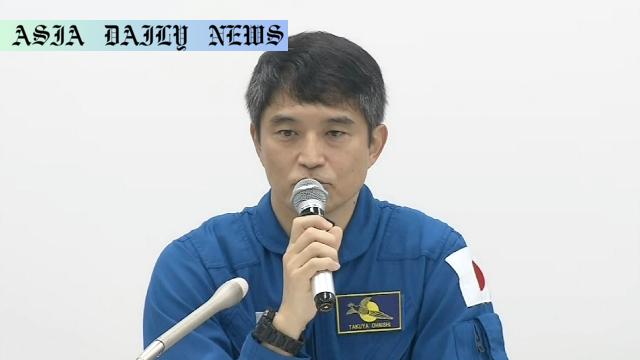NASA mission targets new launch date for the Crew-10 mission, moving up to March 12 with the use of a previously flown Dragon capsule.
- NASA aims to launch Crew-10 mission to the ISS earlier than planned on March 12.
- Japanese astronaut Onishi Takuya will lead the crew, staying for around six months.
- A previously flown SpaceX Dragon capsule will expedite the mission schedule.
- Two NASA astronauts stranded on ISS will return after delays caused by technical glitches.

Introduction: An Advanced Timeline for NASA’s Crew-10 Mission
The National Aeronautics and Space Administration (NASA) recently announced an adjustment to its plans for the Crew-10 mission’s launch to the International Space Station (ISS). Originally scheduled for late March or beyond, the revised launch date is now set for March 12. This accelerated timeline was made possible by opting to utilize a previously flown SpaceX Dragon capsule rather than commissioning a new spacecraft. This decision highlights the agency’s commitment to efficiency and adaptability in space exploration.
The Significance of the Crew-10 Mission
The Crew-10 mission signals another milestone in international collaboration and innovation within the field of space exploration. Japanese astronaut Onishi Takuya will join this historic effort, marking his second journey to the ISS after his 2016 expedition aboard a Russian Soyuz spacecraft. Accompanying Takuya will be three other crewmates, including American and Russian astronauts, showcasing the continued spirit of collaboration among nations.
Why the Launch Date Was Accelerated
One of the key reasons for expediting the Crew-10 mission is NASA’s decision to reuse a SpaceX Dragon capsule. This marks a strategic pivot towards sustainability in missions, reflecting a growing trend toward the recycling of spacecraft to save time and resources. By leveraging SpaceX’s innovative technology and proven hardware, NASA ensures operational efficiency while maintaining safety and reliability standards.
Addressing the Stranded Astronauts Scenario
In addition to its primary goals, the Crew-10 mission will bring closure to an unforeseen challenge: the safe return of two NASA astronauts who have been aboard the ISS since June of last year. Initially transported to the station on a Boeing Starliner, their return has faced repeated delays due to technical glitches. Recognizing the urgency of the situation, NASA turned to SpaceX for assistance in resolving this unexpected complication.
US Leadership and Elon Musk’s Contribution
US President Donald Trump’s intervention, announcing via social media that he enlisted Elon Musk’s SpaceX to resolve the issue, underscores the intersection of political will and private-sector innovation in modern space exploration. Musk’s leadership, coupled with SpaceX’s expertise, ensured a solution that avoided further setbacks and upheld the astronauts’ safety and well-being.
Onishi Takuya’s Role and Legacy
The Crew-10 represents a significant moment for Onishi Takuya, who brings a wealth of experience and expertise to the mission. His six-month stay aboard the ISS will involve conducting critical experiments, fostering international collaboration, and contributing to the expanding knowledge of space science. As Japan continues to play an integral role in advancements in space technology, Onishi’s endeavors symbolize the growing importance of Japanese contributions in the field.
SpaceX’s Growing Role in Space Exploration
SpaceX’s partnership with NASA exemplifies the increasing reliance on private companies for critical space operations. The Dragon capsule’s prior successful missions reinforce its capability to handle complex spaceflight challenges. Reusing such capsules not only drives cost efficiency but also sets a standard for sustainable practices in the aerospace industry. This initiative aligns with NASA’s broader vision for future missions, including lunar exploration and eventual Mars expeditions.
Conclusion: A Mission of Hope and Progress
The Crew-10 mission represents more than just a logistical achievement; it stands as a beacon of hope, innovation, and international cooperation. From addressing pressing challenges to demonstrating the possibilities of recycled spacecraft, NASA and its partners continue to push the boundaries of human achievement. The upcoming March 12 launch serves as a reminder that collaboration, ingenuity, and dedication will propel us toward new frontiers.



Commentary
The Innovation Behind NASA’s Accelerated Crew-10 Mission
News of NASA advancing the launch date of its Crew-10 mission is both surprising and inspiring. The move underscores NASA’s ability to adapt and innovate in the face of logistical challenges. Opting to use a previously flown SpaceX Dragon capsule demonstrates a profound shift in how space missions are conceptualized. Recycling spacecraft is not just cost-efficient but an indicator of how sustainability is shaping the future of space exploration.
The Importance of International Collaboration
One of the most remarkable aspects of this mission is the inclusion of astronauts from Japan, the United States, and Russia onboard the same spacecraft. This highlights the crucial role of international teamwork in the pursuit of universal scientific understanding. Each participant brings unique expertise and perspectives, contributing to the mission’s overall success. Such collaboration is a testament to the idea that space exploration transcends political and geographical divisions.
Addressing Challenges with Private-Sector Partnerships
The involvement of SpaceX in ensuring the safe return of stranded NASA astronauts is a poignant example of how public and private sectors can work together effectively. Elon Musk and SpaceX have repeatedly proven their value as trusted partners, pushing the boundaries of innovation while meeting pressing needs in space exploration. Their role is pivotal in addressing complex problems like spacecraft malfunction.
Looking Toward the Future
The Crew-10 mission serves as a reminder of humanity’s relentless pursuit of excellence and discovery. The innovation, quick adaptability, and collaboration displayed in this operation underscore how far we have come in our ability to navigate the challenges of spaceflight. As missions like this set the stage for future endeavors, including trips to Mars, one cannot help but feel optimistic about what lies ahead.